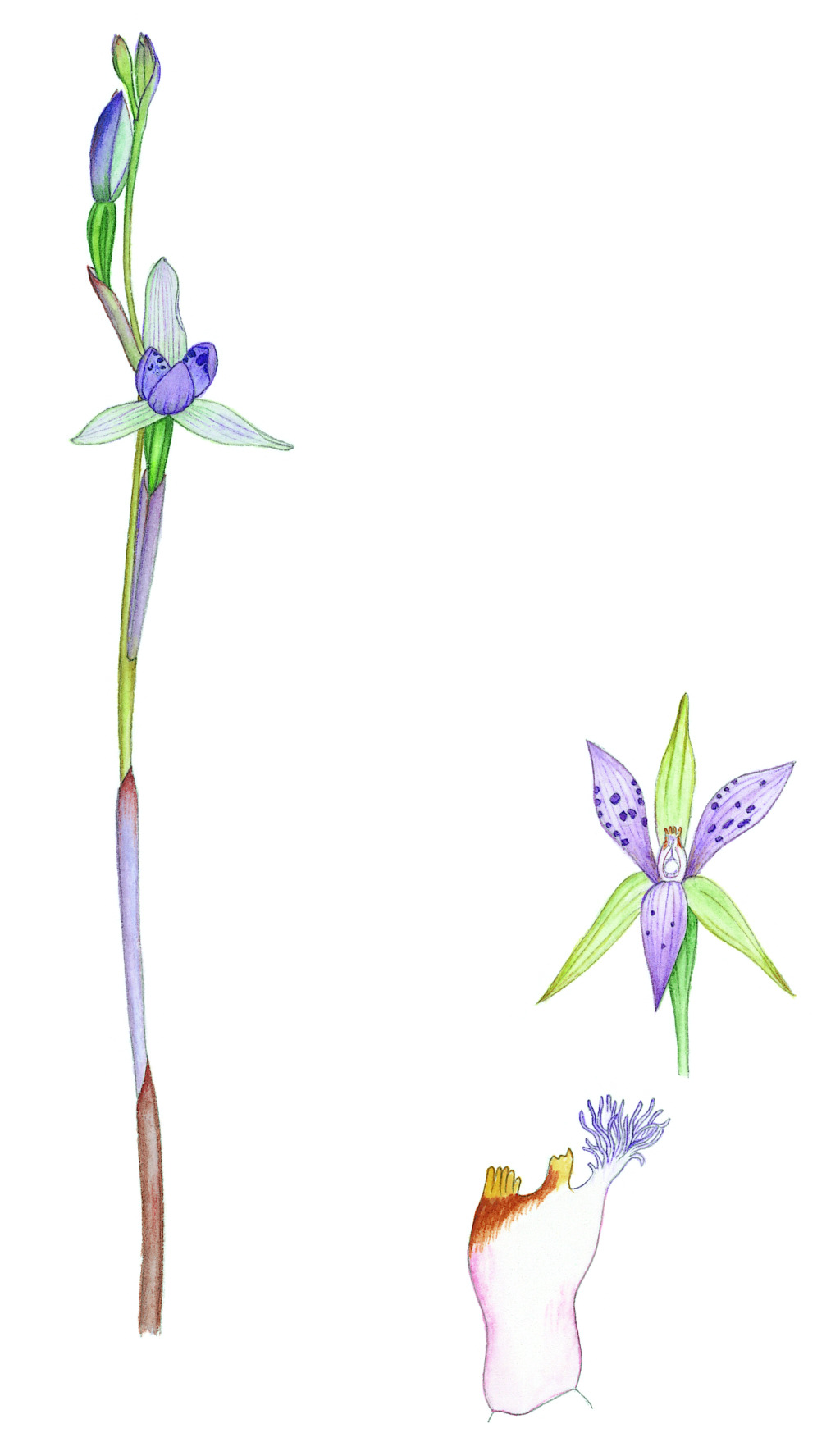Thelymitra hiemalis
D.L.Jones & M.A.Clem.Flowering stem erect, curved or straight, 20–35 cm tall, 2–5 mm diam., mostly straw-coloured to green, reddish basally. Leaf linear-lanceolate, 12–20 cm long, 8–12 mm wide, fleshy, canaliculate, dark green, often reddish at base. Inflorescence 1–5-flowered, loose. Sterile bracts 2, leaf-like. Fertile bracts usually large and leaf-like. Perianth segments oblong to lanceolate, sharply pointed, 15–22 mm long, sepals often greenish, petals and labellum mauve or blue, with large irregular darker spots. Column 4–5 mm long, white or pinkish, often with a brownish subterminal band; mid-lobe not hooded, dorsal surface with a central patch of crowded fingerlike vertical calli, yellow or orange; accessory-lobes incurved over anther, columnar, protruding beyond the mid-lobe, oblique or flat-topped, yellow to orange; lateral lobes present or absent, 0–1.5 mm long, extending horizontally or oblique, flattish, ending in a more or less globose white hair-tuft. Anther protruding below or between column-arms, shortly beaked. Flowers Jun.–Aug.
GleP, VVP, GipP, OtP, CVU, HSF. Also SA. Found in heathland and heathy woodland on well-drained soils.
Distinguished from Thelymitra ixioides and T. juncifolia by the usually leaf-like fertile bracts, narrow, sharply pointed perianth segments of contrasting colour and the usually Winter flowering season.
Known from very few records in Victoria including Mt Richmond near Portland, Anglesea, Upper Beaconsfield and Blackburn, a suburb of Melbourne.
Weber, J.Z.; Entwisle, T.J. (1994). Thelymitra. In: Walsh, N.G.; Entwisle, T.J., Flora of Victoria Vol. 2, Ferns and Allied Plants, Conifers and Monocotyledons, pp. 840–854. Inkata Press, Melbourne.
 Spinning
Spinning

